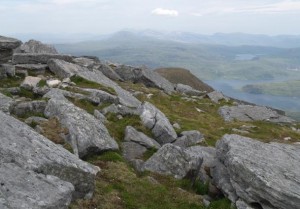SATURDAY, 16 APRIL 2011
Fossils of microorganisms less than 1 mm in diameter were first identified in shale from Loch Torridon in 1907. Subsequent studies over the last century have found few distinctive fossilised forms, but a recent examination has found an exceptionally detailed three-dimensional preservation of specimens. The organisms, dating back a billion years, show a remarkable diversity of shape and structure. Importantly, their relatively large size, organisation and outer-walls suggest that they were not mere assemblages of single-celled bacteria but were more complex, eukaryotic cells.These findings, reported in the journal Nature, suggest that early Eukaryotes were capable of diversifying in non-marine habitats, not just in marine settings as has generally been assumed [1]. This may have been possible because of the rich and heterogenous conditions that freshwater habitats create, with varying chemical environments and wet-dry cycles promoting speciation. The findings further suggest that some of the key events in the evolution of complex multicellular life may have occurred in terrestrial environments. This could include the evolution of the nucleus, cellular organelles that allow photosynthesis, and even sex.
500 million years after the emergence of these organisms, simple vegetation would colonise the Earth. In turn ferns, conifers and flowering plants would evolve and create the plant diversity we know today.
Written by Robert Jones

